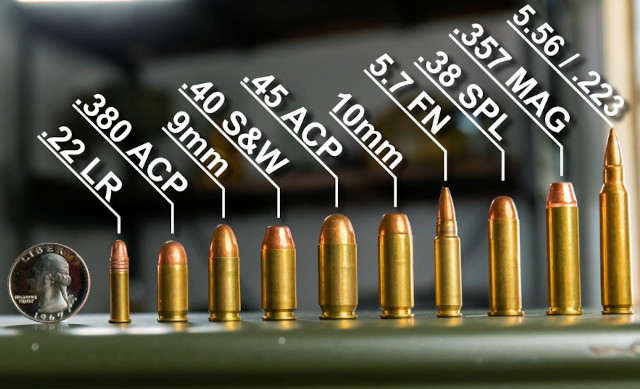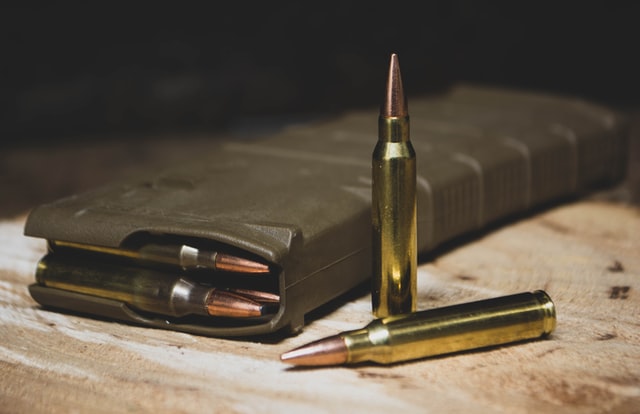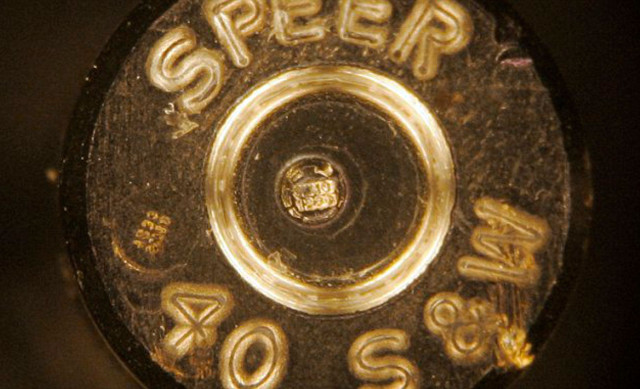By Marvin Marroquin • Updated: 02/09/2023 • 8 min read
There is no question that the fear of overwhelming gun control is real among gun owners. But it doesn’t stop at guns, accessories have been restricted and even banned. But how about bullet control, is it real?
Bullet control is absolutely real. Several states have already restricted the type of bullet and caliber one can own or carry. There are even policies in place to burden gun owners to comply by hurting their pockets. Future restrictions are also being discussed, such as microstamping.
Just so we’re not ignorant to the facts, I’m going to explain the tactics behind bullet control that are used against gun owners. We need to remain vigilant against these policies, especially when they don’t have an evidence of actually reducing gun violence.
Restrictions based on bullet features
The Second Amendment makes it clear that the federal government shall not infringe on the right of gun ownership. Unfortunately, states are allowed to interpret our rights and decide which will work best for them. This means there are 50 inconsistent variations of the same right across America. One such variation is the control of ammunition a citizen can possess.
At the time of writing this article, 21 states (including D.C.) have banned the possession of armor piercing ammunition. The idea is that these rounds pose a particular threat to public safety and serve no reasonable hunting, target shooting, or self-defense purpose. These types of ammunition are made of specific materials and designed to be fired in a handgun or rifle to penetrate metal or armor, including body armor commonly worn by police officers.
Another type of banned ammunition is the Jacketed Hollow Point (JHP). This type is currently only banned in New Jersey, which prohibits possession outside of a person’s home. JHP rounds are designed to expand and reduce speed on impact so as to not over-penetrate and hit something, or someone, else beyond the intended target. Gun owners favor this type of self defense round for precisely that reason, so they don’t over-penetrate. This greatly reduces the amount of injuries to innocent bystanders.

Finally, 8 states have banned the possession of exploding ammunition. These types are classified as ammunition that are designed to explode, segment or detonate upon impact with a target. But that broad categorization of “exploding” ammunition is very misleading. It’s simply not true that common criminals are running around with bullets that explode into a ball of fire inside the torso of their chosen target.
Let’s quickly dispel some myths on exploding ammunition. First, bullets that contain an explosive charge in addition to the one that propels an ordinary bullet are not considered ammunition at all for ATF purposes. They are categorized as explosives. The ordinary criminal cannot purchase explosives without a very expensive license, a strenuous and time consuming application process, and a thorough background check.
Furthermore, bullets containing more than an insignificant amount of an explosive charge (0.25 ounces) are classified as missiles under ATF rules. I think it’s pretty safe to say that you can’t walk into your local Walmart and buy missiles right off the shelf.
There is one type of ammunition in this category that isn’t even an explosive at all. Dubbed the R.I.P (Radically Invasive Projectile), it is marketed as “the last round you will ever need.” This bullet is designed to splinter into eight inviscerating shards upon impact. This hardly meets the definition of explosive, but gun control advocates aren’t known for their logical reasoning.

Restrictions based on bullet calibers
Caliber simply refers to the diameter of a bullet, and is usually measured in millimeters (9mm) and hundredths or thousandths of an inch (.223). For shotguns, an older unit of measurement is used based on the bore diameter of a shotgun barrel, a gauge. A simple way to remember the size difference is the smaller the gauge, the larger the bore diameter (12 gauge vs 20 gauge). There are some exceptions, but that is generally how calibers work.

Some states have either banned or restricted the .50 BMG caliber entirely, whereas California has outright banned any caliber larger than .60. Restrictions may come in the form of requiring a license or permit to manufacture, distribute, transport, import, possess, sell, or transfer such calibers.
Restrictions based on construction materials
Believe it or not, there are even restrictions based on the materials, or coatings, used to construct a bullet. Without any reasoning or just cause, there are states that ban materials such as teflon coating, plastic coating, fluorocarbon coating, tungsten alloys, steel, iron, brass, beryllium copper, or any equivalent material of similar density or hardness to those listed. None of these materials have been shown to significantly increase the lethality or damage done to a target. They have arbitrarily been banned or restricted based solely on marketing language, without any understanding of the benefits these materials have.
Restrictions on magazine capacity
Every time there’s a mass shooting where the attacker used a semi-automatic rifle with a high capacity magazine there’s a new push for limiting the amount of ammunition a firearm should hold. These magazine capacity restrictions are a back door tactic used to go after “assault weapons” (a made up term, but we’ll save that for another article). According to the Giffords Law Center, high capacity magazines are often used in mass shootings because they allow a shooter to keep firing for longer periods of time, increasing casualties and reducing victims’ ability to escape or intervene.

Let’s assume that a criminal (who has already decided to break the law by murdering people) decides to obey their states’ high capacity magazine ban. The insignificant difference between loading a gun after 10 rounds, as opposed to 30 rounds, has not shown to reduce the lethality of a mass shooting event. There is no data that conclusively shows that restricting the amount of ammunition carried saves lives.
In fact, there’s actually more evidence to the contrary. During 1994-2004, there was a nationwide Assault Weapons Ban, and in effect, a ban on high capacity magazines as well. In 1999, the infamous Columbine Shooting took place where 2 students injured 24 people and killed 15 more, including themselves. The weapons used included a Hi-Point 995 carbine rifle, a sawed-off pump shotgun, a double-barreled sawed-off shotgun, a TEC-DC9 9mm semi-automatic handgun, a variety of knives, and bombs galore. After 188 rounds shot and 95 bombs exploded, it’s safe to say they weren’t concerned about any magazine capacity bans. Criminals do what criminals have always done, ignore the law.
Several states have restricted magazine capacity to as little as 10 rounds for pistols and rifles and 5 rounds for shotguns. These types of restrictions have put responsible, law-abiding gun owners at a serious disadvantage. They are grossly outgunned by those who choose to ignore the law and carry the largest capacity firearm they can get their hands on. Limiting magazine capacity only favors the law-breakers.
Restrictions based on financial burden
Increasing federal excise taxes on ammunition is used to discourage ammunition purchases by raising their prices and using the revenue to fund gun violence reduction projects and research by the CDC. There have been recent talks to increase this tax by as much as 50%. This will only increase the financial burden for lower and middle class citizens who arguably need it most because of the neighborhoods they likely live in.
Of course, increasing the cost of ammunition sounds great in theory, but in real life application it will prove to be ineffective at curbing any significant amount of gun violence. Those who purchase ammunition in large quantities for the purpose of target shooting and training will be hit the hardest. But those who purchase in low quantities for self defense, criminal activities, or suicides will not be dissuaded by the increase costs.
Ideas for future restrictions
One of the most popular ideas for the future of bullet control is Microstamping. This tactic can be implemented in a number of ways but the general concept is to serialize each bullet, either by the manufacturer or via the gun’s firing pin. This will enable authorities to collect casings at a crime scene, enter the serial number or code in a database and quickly track the firearm to its owner. It would require a database to be funded and maintained by a governing body, which would of course also increase the cost of firearms and/or ammunition.

The issue with Microstamping is that it would not prevent one single crime. Microstamping only benefits tracing the bullet back to the owner after the commission of a crime. It serves no purpose to prevent the crime in the first place. This is why the likelihood of implementing a national Microstamping mandate is very low. The results will not justify the financial cost and resources.
Aside from the cost, it’s very difficult to get gun manufacturers to comply and meet the standards of Microstamping technology. Currently, only California and D.C. have laws requiring Microstamping standards that were passed in 2007 and 2018, respectively. Both Maryland and New York recently repealed laws that required a statewide ballistic imaging database due to cost and efficiency related issues.
As you can see, bullet control is very real. Yet in all its efforts to dissuade gun owners from using certain types or to prevent gun violence at all, it’s very ineffective in the grand scheme of things.
